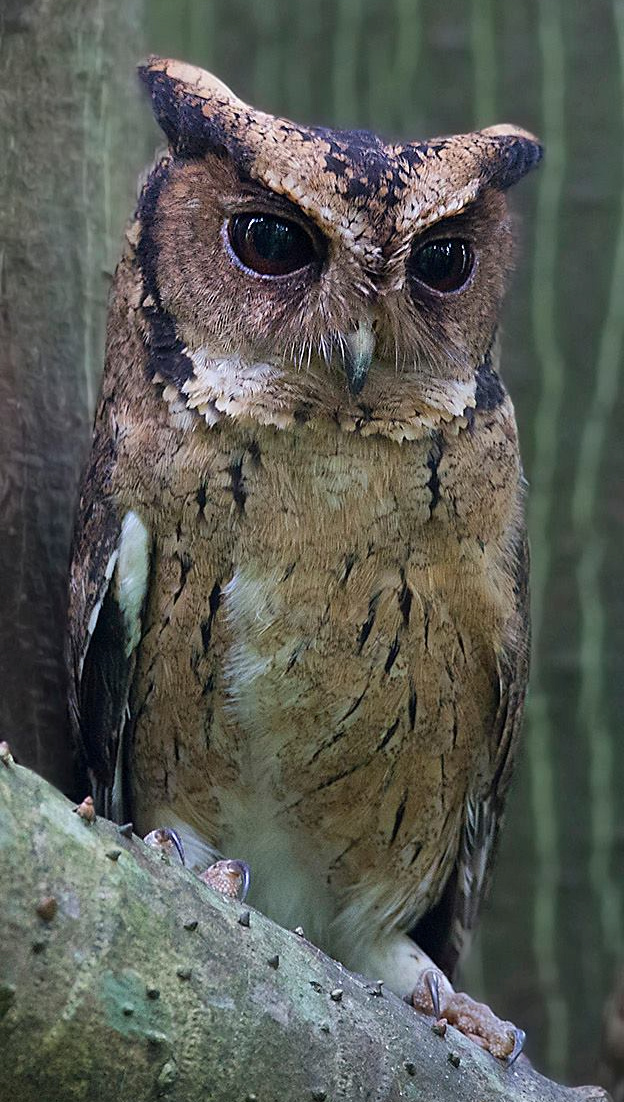The Indian Scops Owl: A Closer Look At Otus Bakkamoena Glabripes
Share
The Indian Scops Owl, scientifically known as Otus bakkamoena glabripes, is a fascinating bird that belongs to the order Strigiformes and the family Strigidae. This subspecies is primarily found in Southern China and the island of Formosa, captivating birdwatchers and nature enthusiasts alike with its unique characteristics and behaviors. In this article, we will explore the physical traits, habitat, diet, behavior, reproduction, and conservation status of this remarkable owl.

Physical Characteristics
The Indian Scops Owl is a small to medium-sized owl, typically measuring around 20-25 cm in length. It has a distinctive appearance characterized by its rounded head, large eyes, and ear tufts that can be raised or lowered depending on its mood. The plumage is generally mottled brown and gray, providing excellent camouflage against tree bark and foliage. The facial disc is well-defined, enhancing its ability to hear and locate prey in the dark.

Habitat
This owl prefers a variety of habitats, including deciduous and mixed forests, as well as urban areas with sufficient tree cover. It is commonly found in Southern China, particularly in regions such as Szechuan, Anhwei, Yunnan, and Tonkin. The island of Formosa also serves as a significant habitat for this species. The Indian Scops Owl is often seen perched on tree branches during the day, blending seamlessly into its surroundings.

Diet
The Indian Scops Owl primarily feeds on insects, small mammals, and other small vertebrates. Its diet is largely composed of beetles, moths, and crickets, which it hunts at night. The owl's exceptional hearing and keen eyesight allow it to detect prey even in low-light conditions. It often hunts from a perch, swooping down to catch its meal with swift precision.

Behavior
This owl is known for its solitary and nocturnal behavior. During the day, it roosts in tree branches, remaining motionless to avoid detection. At night, it becomes active, calling out with a series of soft hoots that can be heard over long distances. The Indian Scops Owl is also known for its ability to mimic the calls of other birds, which may help it avoid predators or attract mates.

Reproduction
The breeding season for the Indian Scops Owl typically occurs between March and June. During this time, males establish territories and attract females through vocalizations and displays. The female lays 2-4 eggs in a tree cavity or abandoned nest of another bird. Both parents participate in incubating the eggs and caring for the young once they hatch. The chicks fledge after about 4-5 weeks, but they may remain dependent on their parents for several more weeks.
Conservation Status
Currently, the Indian Scops Owl is not considered endangered, but habitat loss due to deforestation and urbanization poses a threat to its population. Conservation efforts are essential to protect its natural habitats and ensure the survival of this unique species. Birdwatchers and nature enthusiasts can contribute by supporting local conservation initiatives and promoting awareness about the importance of preserving owl habitats.
Observing the Indian Scops Owl
For birdwatchers interested in observing the Indian Scops Owl, the best time to spot this species is during the evening or early morning when it is most active. Look for it in wooded areas, parks, and gardens with ample tree cover. Listening for its distinctive calls can also help locate this elusive bird. Patience and quiet observation are key to successfully spotting the Indian Scops Owl in its natural habitat.
The Indian Scops Owl, with its striking appearance and fascinating behaviors, plays a vital role in the ecosystem as a predator of insects and small mammals. By understanding and appreciating this remarkable bird, we can contribute to its conservation and ensure that future generations can enjoy its presence in the wild.